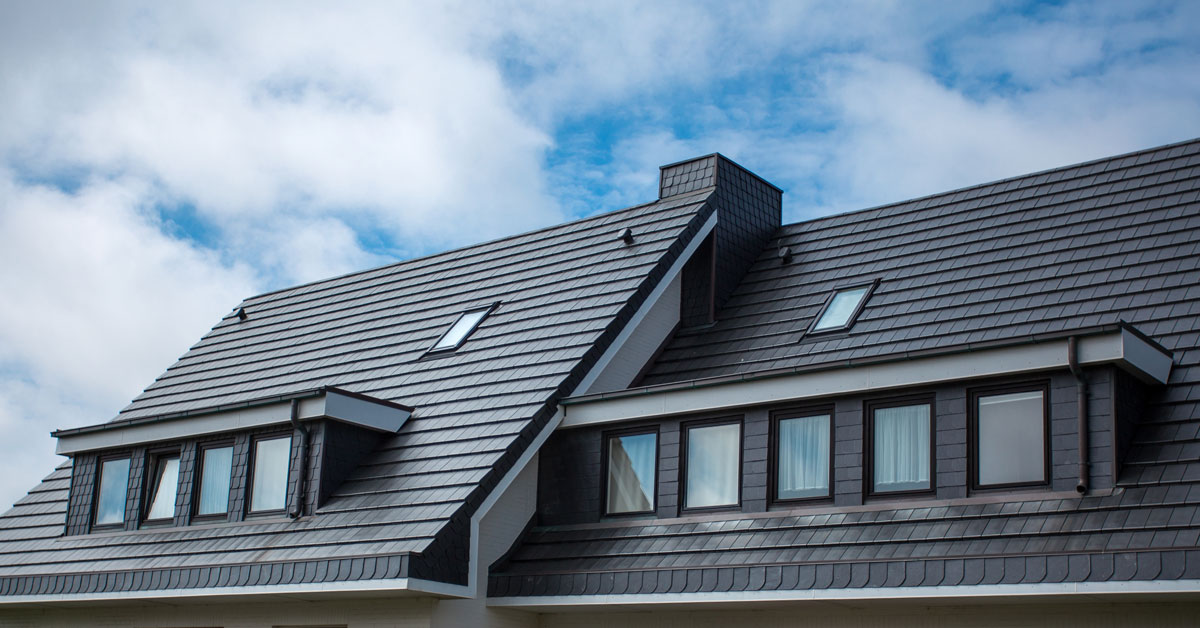Finest Practices for Ensuring Proper Roof Air Flow
A well balanced intake and exhaust air vent ratio, commonly 1:300, plays a crucial function, with intake vents ideally placed at the lower side of the roofing for amazing air entrance and exhaust vents at the top for cozy air leave. Keeping insulation away from vents is important to avoid air movement constraint.
Understand Air Flow Fundamentals
Properly recognizing ventilation essentials is necessary for making certain the longevity and performance of roof. Efficient air flow alleviates wetness buildup and temperature level extremes in the attic room, both of which can cause substantial structural damage in time. A well-ventilated roof covering assists in stopping common problems such as mold and mildew development, timber rot, and ice dams, which can endanger the stability of the roof materials and the underlying structures.
The primary goal of ventilation is to facilitate the movement of air, permitting a regular exchange between the interior and exterior atmospheres. This equilibrium is accomplished via a mix of consumption and exhaust vents that interact to preserve optimum airflow. Consumption vents, typically situated along the eaves or soffits, allow fresh air to go into the attic room space, while exhaust vents, commonly positioned at or near the roof ridge, allow hot, damp air to get away.
Key aspects influencing the performance of roofing system air flow consist of appropriate positioning, appropriate sizing, and guaranteeing that both intake and exhaust vents are unobstructed. Routine examination and upkeep are critical to identify possible obstructions, damages, or inadequacies in the air flow system, thereby guarding the roof's performance and longevity.
Types of Roofing System Vents
Roofing system vents play an essential function in preserving reliable attic air flow and, by expansion, the overall health and wellness of the roofing system. Numerous kinds of roofing system vents are offered, each with unique benefits customized to particular roof needs.

Soffit vents are installed under the eaves and job in tandem with roof covering vents to make certain a well balanced consumption and exhaust system. By allowing cooler air to enter from below, soffit vents help with the expulsion of warm air with top vents. Gable vents, situated on the outside walls of the attic room, offer an additional effective option, especially in homes with gable roofing systems.
Evaluate Your Present Ventilation

Following, consider the age and problem of your roofing products and air flow components. Older systems might not adhere to current structure codes or may have deteriorated in time, minimizing their effectiveness. Conduct a complete assessment to determine any kind of indications of damage, such as rust, damage, or gaps that could endanger the system's efficiency.
In addition, determine the attic room temperature level and moisture levels. Heats and humidity can suggest poor air flow - gainesville fl roofing companies. Make use of a hygrometer and thermostat to obtain accurate analyses, comparing them with exterior conditions. Consistent inconsistencies suggest prospective concerns that need resolving.
Installment Best Practices
Efficient setup of roof covering ventilation systems is vital for making sure optimal performance and long life. Proper installation starts with recognizing the particular ventilation requirements of the roofing and the structure it covers. This involves determining the appropriate proportion of intake to wear down vents, usually adhering to the 1:300 policy, which stipulates one square foot of ventilation for every 300 square feet of attic flooring area.

Intake vents ought to be set up at the roof covering's reduced edge, frequently in the soffits, to permit trendy air to enter. Exhaust vents, on the various other hand, ought to be mounted near or at the roofing system's peak to help with the departure of warm, damp air.
Seal all vent connections diligently to stop air these details leaks and possible water seepage. Usage here high-quality products and adhere to producer guidelines to guarantee durability and performance. In addition, incorporating ridge vents with baffles can significantly enhance air movement efficiency by stopping wind-driven rainfall and snow from entering the attic.
Eventually, precise setup of roof covering ventilation systems reduces potential issues such as mold development, ice dams, and architectural damages, making sure the roof covering's honesty and the building's total wellness.
Regular Upkeep Tips
Consistency in upkeep methods is essential to making certain the long-lasting effectiveness of roof ventilation systems. Regular evaluations are essential, preferably executed biannually-- in the springtime and autumn. During these examinations, make sure that vents are complimentary of debris, nests, and other blockages that might hinder air flow. Look for any indicators of wetness buildup or mold and mildew, as these can indicate incorrect air flow or leakages (roofing companies).
Cleaning up the vents is one more vital job. Use a soft brush or a vacuum to eliminate dust and debris from consumption and exhaust vents. Beware not to damage the vent screens or louvers during the procedure. Furthermore, inspect the attic room room for any kind of indicators of water damage, which can jeopardize the honesty of the roof.
Appropriate insulation is equally crucial. Make sure that attic room insulation does not obstruct the vents, as this can drastically limit air movement. If any type of insulation has changed or resolved, reposition or change it to keep an efficient obstacle.
Finally, replace any kind of harmed or missing parts without delay. Damaged vents, cracked shingles, or worn-out flashing can all add to poor air flow and ought to be dealt with right away. Routine maintenance ensures that the roof covering air flow system works ideally, therefore expanding the life expectancy of the roofing system itself.
Verdict
Making sure correct roof covering air flow is critical for preserving the efficiency Bonuses and durability of a roof covering system. Adherence to the 1:300 consumption and exhaust air vent ratio, coupled with the calculated placement of vents, is crucial.
A balanced intake and exhaust air vent ratio, commonly 1:300, plays a pivotal function, with intake vents preferably placed at the lower side of the roof covering for trendy air access and exhaust vents at the height for cozy air exit. Intake vents, normally situated along the soffits or eaves, permit fresh air to enter the attic room space, while exhaust vents, often situated at or near the roof ridge, enable warm, humid air to leave.
Soffit vents are installed under the eaves and job in tandem with roof covering vents to make sure a well balanced intake and exhaust system. By allowing cooler air to get in from below, soffit vents promote the expulsion of warm air via upper vents. Adherence to the 1:300 consumption and exhaust air vent proportion, coupled with the strategic positioning of vents, is necessary.